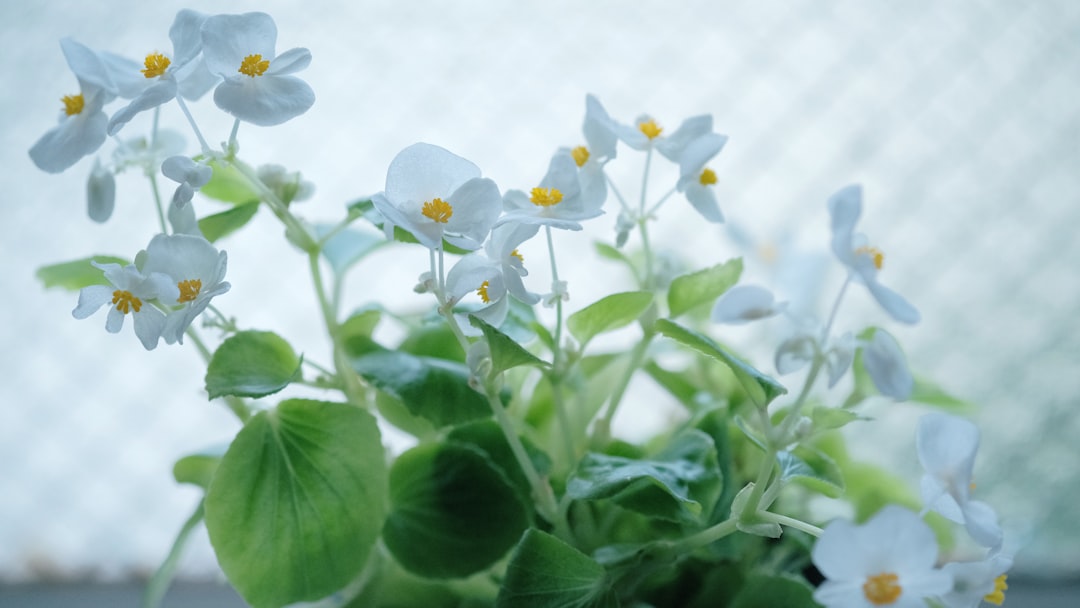Unveiling the Beauty of Crossandra: A Gardener's Delight

Annual flowers bring a burst of color and freshness to any garden, and among them, crossandra stands out as a true gem. Also known as the firecracker flower, crossandra captivates with its glossy green foliage and almost non - stop blooms, making it a must - have for both novice and experienced gardeners.
Crossandra is native to India and Sri Lanka, where it thrives in warm, tropical climates. Its scientific name is Crossandra infundibuliformis, and it belongs to the Acanthaceae family. The plant typically grows to a height of about 1 to 2 feet, with a spread of 1 to 1.5 feet, making it a compact and suitable choice for borders, containers, or as part of a mixed flower bed.
One of the most alluring features of crossandra is its foliage. The leaves are shiny, dark green, and lance - shaped, providing an attractive backdrop for the vibrant flowers. They have a leathery texture, which not only adds to their aesthetic appeal but also helps the plant withstand some degree of drought. The foliage remains evergreen in warmer climates, ensuring that your garden has a touch of greenery all year round.
The flowers of crossandra are a sight to behold. They come in shades of orange, yellow, and salmon, with tubular petals that flare out at the end, resembling small firecrackers. These blooms appear in clusters at the tips of the stems, and under the right conditions, they can flower almost continuously from spring through fall. This long - blooming period makes crossandra an excellent source of color in the garden when many other annuals may have stopped flowering.
Now, let's delve into how to grow crossandra successfully. First and foremost, crossandra loves sunlight. It requires at least 6 hours of direct sunlight per day to produce an abundance of flowers. However, in extremely hot climates, some afternoon shade can prevent the plant from getting scorched. When it comes to soil, crossandra prefers well - drained, fertile soil. A soil with a pH between 6.0 and 7.0 is ideal. You can amend the soil with organic matter such as compost or well - rotted manure before planting to improve its texture and fertility.
Watering is another crucial aspect of crossandra care. The plant likes to be kept evenly moist but not waterlogged. Overwatering can lead to root rot, so it's important to allow the top inch of soil to dry out between waterings. During the hot summer months, you may need to water more frequently, especially if the plant is in a container. Mulching around the base of the plant can help retain moisture and keep the roots cool.
Fertilizing crossandra regularly will encourage healthy growth and more blooms. Use a balanced, water - soluble fertilizer every 4 to 6 weeks during the growing season. Follow the instructions on the fertilizer package for the correct dosage. Avoid over - fertilizing, as this can result in excessive foliage growth at the expense of flowers.
Crossandra is generally a pest - and disease - resistant plant. However, it can be susceptible to aphids, whiteflies, and spider mites. Regularly inspect the plant for any signs of pests, and if you notice an infestation, you can use an insecticidal soap or neem oil to control them. As for diseases, root rot can be a problem if the soil is not well - drained. Make sure to plant crossandra in a location with good drainage to prevent this issue.
Propagation of crossandra can be done through seeds or stem cuttings. If you choose to grow from seeds, start them indoors about 8 to 10 weeks before the last frost date. Sow the seeds on the surface of a seed - starting mix and lightly cover them with a thin layer of soil. Keep the soil moist and warm, and the seeds should germinate in about 2 to 3 weeks. For stem cuttings, take 3 - to 4 - inch cuttings from a healthy plant, remove the lower leaves, and dip the cut end in rooting hormone. Plant the cuttings in a pot filled with a well - draining potting mix and keep them in a warm, humid place until they root.
In conclusion, crossandra is a wonderful annual flower that offers both beauty and ease of care. Its glossy foliage and continuous blooms make it a standout in any garden. By providing the right amount of sunlight, water, and nutrients, and by taking proper care of pests and diseases, you can enjoy the splendor of crossandra in your garden for many seasons to come. Whether you're looking to add a pop of color to your patio or create a vibrant border in your yard, crossandra is an excellent choice.